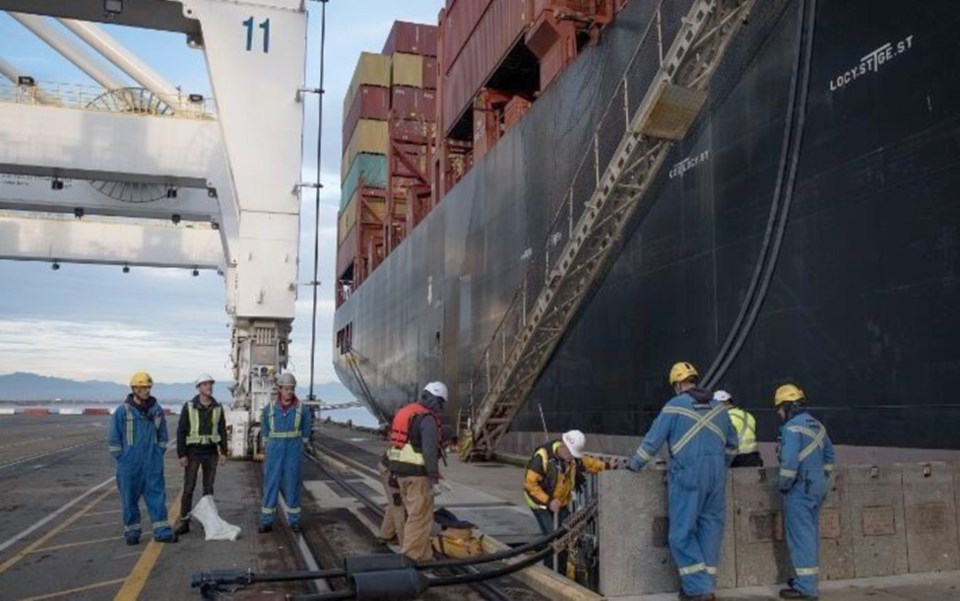The operator of the container terminal at Roberts Bank welcomed the first vessel to use a new shore power system installed this year.
On Thursday, Nov. 14, the MSC Meline used the technology which allows vessels to plug into the clean electrical power grid at GCT Deltaport and turn off their auxiliary diesel engines while docked.
This eliminates up to 95 tonnes of air pollutants per vessel, equivalent to removing 20 vehicles off the road for one year.
The collaboration was enabled through the Government of Canada Shore Power Technology for Ports program and the Vancouver Fraser Port Authority, each contributing $3.4 million, for a total investment of $6.8 million, GCT explained in a news release.
Through the collaboration, GCT is helping protect the environment and community by encouraging vessels with the newest and greenest technology to call on Deltaport, said president and CEO Doron Grosman.
Vancouver Fraser Port Authority president and CEO Robin Silvester said idling ships can contribute to air pollution and climate change, important issues for the marine transportation industry.
He added the port and project partners will continue to seek ways to reduce air emissions from ships, reduce ship noise and improve air quality for terminal employees and neighbouring communities.
It's the fourth shore power installation at the Port of Vancouver and the second at a container terminal.
The City of Delta appreciates the ongoing efforts of the port community to improve livability for Delta citizens, said Mayor George Harvie.
According to the port authority, shore power is not one-size-fits-all system.
There are a number of conditions that affect whether a ship can plug in, including availability of terminal facilities, configuration of a terminal’s shore power equipment, the location and limitations of the ship’s shore power equipment, and the availability of power from BC Hydro.



